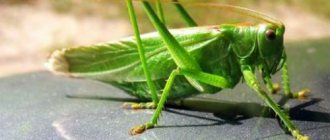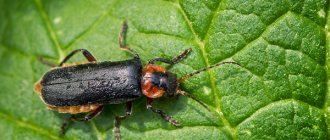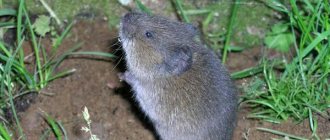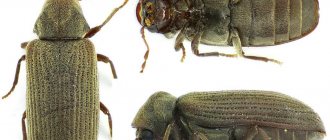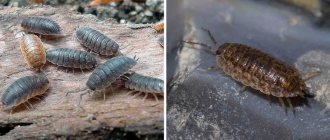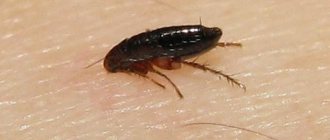General information
Probably many people know what cabbage looks like. An adult individual (also called an imago) of the cabbage white, the photo of which is located below, is very large in size. It has white wings with black corners in front, the wingspan reaches as much as 6 cm. Cabbage white caterpillars are yellow-green, there are many black dots on the body, and stripes on the back. Their size is about 4 cm.
In winter they are found as green pupae with black dots. In the spring, they already appear in the form of butterflies, which lay about 200 eggs at a time. They can be seen very easily on the leaf. If the eggs are not destroyed immediately, then within a week the larvae will hatch and devour the cabbage leaves. Butterflies begin to fly during the day and are especially active in sunny weather.
Description of the insect
White butterflies are a family of medium-sized butterflies. Their wingspan ranges from 4.5 cm to 6 mm. It got its name due to its coloring: these are predominantly white or light-colored insects, the wings of which are decorated with spots, dots, areas, lines: black, yellow, orange. Some details of the drawing can be seen exclusively in the ultraviolet range.
These butterflies are distributed almost all over the world: the exceptions are regions with extremely low temperatures and New Zealand.
Common types of whitefish
In total, the family includes 1,100 species of butterflies, grouped into 91 genera. Only 70 of them can be found on the territory of the former Soviet Union. But they also cause great damage to agriculture. The most common:
- Cabbage white (popular name - “cabbage”). The wings are white but edged with black and have dark markings. The lower part is light green, which allows the butterfly to hide from potential enemies by merging with the plants. At the beginning of summer, the female lays clutches of 20–100 yellow eggs, from which soon cabbage white caterpillars will appear, pests of plantings. The larvae are especially dangerous for ordinary and Brussels sprouts. Green caterpillars, with yellow stripes and black spots, stay in flocks and gnaw the leaves of the cabbage head. During the year, 2 generations manage to grow: at the end of May and in August.
- Lesser cabbage is the “younger sister” of the common cabbage, differing from its relative in its smaller size.
- The rutabaga is very similar in appearance to both cabbage grasses, but prefers to live in mountainous and forest areas.
- The white turnip (“turnip”) is also easy to confuse with cabbageweeds. It has round black spots on the forewing: one in females and two in males.
- The mignonette's wingspan reaches 5 cm. The favorite food for its caterpillars is cabbage, radish and, of course, mignonette.
What harm do cabbage plants cause?
Starting from the second half of summer, cabbage whites destroy the crop. They eat the edges of the leaves. If there are a lot of larvae, then they can destroy the pulp of the head of cabbage, and after a couple of days, the entire head of cabbage.
Development cycle of cabbage whites
Before an adult emerges, the cabbage weed goes through several stages:
- In winter they are pupae. They winter on trees, various bushes or walls of buildings. A short period of time after the individual flies, they begin to lay their eggs on cabbage leaves. Females lay their eggs in heaps of 15 to 200 pieces.
- After a few weeks, caterpillars appear and molt (this process lasts from several weeks to a month). After this, the cabbage white butterfly grows.
Measures to combat cabbage whites
You can fight the pest using various methods, there are a lot of them. Let's look at the most effective ones. But first, some tips:
- When spring comes, the garden needs to be cleared of old weeds and grass, because butterflies like to eat them before laying eggs.
- Inspect the bottom of the cabbage every day; pests live there.
- Immediately destroy clusters of cabbage eggs.
- In the fall it is necessary to dig up the garden.
- It is better to plant cabbage early, before the butterflies begin to emerge.
The most effective method, as mentioned above, is to inspect the cabbage daily. It will not be superfluous to inspect neighboring crops, since pests can settle there too. But this method still won’t completely get rid of cabbage. Yes, and it takes a lot of energy. The best way in this case would be to use special drugs - poisons. There are a lot of means to destroy the cabbage cutworm, but insecticides such as Kinmiks and Fitoverm are considered the most effective. They will help completely neutralize these and other cabbage pests.
Preventive measures against cabbage
If you take care of the safety of the crop in advance, you can make your life much easier and save your area from pest invasion. There are a number of preventive measures for this:
- Remove clutches of eggs with powerful water pressure.
- Actively control weeds throughout the season.
- Insulate plantings with agrofibre.
- Inspect the crop weekly for caterpillars.
- In the autumn, it is necessary to dig up the site and repeat this action in the spring.
- Place beds with cruciferous vegetables at some distance from each other.
- Poison with pesticides, use folk remedies.
How to deal with a pest
The most basic way to prevent the massive appearance of caterpillars is to inspect cabbage leaves, namely their underside. Found eggs and caterpillars are destroyed.
Use of chemicals and insecticides. There are a great variety of them: fitoverm, kemifos, kinmiks, etc. Must be used according to the instructions.
Bacterial and fungal infections, as well as parasitic insects, destroy the pest and prevent its reproduction.
- "Small-bellied." This parasite lays its eggs directly into the caterpillars. The developing larvae feed on the insides of the caterpillar, and they die. The parasite larvae emerge from the caterpillar and weave yellow cocoons similar in shape to an egg. After pupating, they become adult parasitic insects and then fly out of their cocoons. It is imperative to preserve these cocoons and transfer them to places where there are especially many caterpillars.
- Whitefish pupae are often parasitized by pteromala, which also causes the death of caterpillars.
- The egg eater Trichogramma develops in the eggs of the white butterfly.
- As for diseases, “flasheria” causes enormous damage to the whitefish - the growth of the caterpillars stops, their insides turn into a yellow “porridge”.
How to get rid of cabbage cutworm?
To get rid of the pest, you can use different methods: collect insects by hand, use pesticides, traps and decoctions. Each method has its own advantages and disadvantages. Let's take a closer look at various ways to get rid of cabbage cutworms.
Mechanical methods of fighting armyworms
The easiest way to reduce pests is by hand picking.
Regularly, every week, it is necessary to inspect the cabbage leaves. All discovered clutches of eggs and larvae must be destroyed. The optimal time for collecting caterpillars is early twilight, when the larvae emerge from their hiding places in search of food.
Manual collection of insects is considered an ineffective method of pest control. It will help reduce the number of armyworms on the site, but it is impossible to completely get rid of them. If you do not use other methods or skip at least a few weeks of collecting pests, the population will completely recover, and all your work will be in vain.
To get rid of cutworm pupae, it is necessary to loosen the soil to a depth of at least 10 cm before winter.
Chemical methods of fighting armyworms
To destroy pests, the most effective method is the use of chemicals.
The following means are suitable for combating armyworms:
- Iskra-M;
- Inta-Vir;
- Sherpa;
- Kinmiks;
- Fas;
- Bankolom;
- Zeta et al.
Insecticides should be sprayed at sunset in calm and rainy weather. Chemicals can be used no more than twice per season.
The use of insecticides must be stopped a month before harvesting cabbage, otherwise there is a risk of fruit poisoning later.
Biological methods of combating armyworm
Using biological agents is a safer way to get rid of pests compared to chemicals.
The following biological agents will be effective against armyworms:
- Lepidocide;
- Bitoxibacillin;
- Fitoverm et al.
Biological products do not harm humans or processed fruits. But their use has its own rules: treatment with biological agents must be completed no less than 5 days before the start of harvest.
Folk methods of fighting armyworms
Cabbage armyworm, methods of control
Traditional methods are very popular. They are quite effective, completely safe for humans and plants, and are also often cheaper, since all the ingredients are either cheap or completely free.
You can prepare special traps to catch pests. To make them, you need to take disposable cups or cut plastic bottles (the height of the container should be about 3 cm). They need to be filled with sweet liquid and hung a meter from the ground.
To prepare a sweet liquid, you need to mix a liter of water and 50 g of yeast. Then wait a few hours for the mixture to ferment. Next, add a liter of molasses and 3 liters of water. Compote, jam, syrup and other sweet liquids are suitable as bait.
Periodically, you need to add sweet liquid to the traps, and once every 2 weeks you need to completely change the contents and throw away the caught butterflies.
Recipes for decoctions and tinctures against cabbage cutworm:
- Mix a glass of ash with 200 g of tobacco waste, 30 g of liquid soap, 15 g of mustard. Pour all 10 liters of boiling water and leave for 24 hours.
- Boil 100 g of freshly picked red pepper or 20 g of dry peppers in a liter of water for an hour. Strain and leave to brew for two days. Add the resulting decoction to 10 liters of water.
- Pour half a bucket of burdock leaves with water and leave for 72 hours.
- Add 300-400 g of crushed flowers and stems of bitter wormwood, picked during the flowering period, to a bucket of boiling water. Leave for 6 hours. Add a spoonful of liquid soap.
- Add a glass of baking soda to a bucket of water.
After preparing any of the above decoctions, you need to pour it into a container with a spray bottle and treat the cabbage.
The cabbage cutworm has natural enemies. In particular, these include Trichogramma. These parasitic insects lay their eggs inside the eggs of pest butterflies.
You can often notice small green or brown caterpillars on cabbage growing in the garden - these are cabbage cutworm larvae.
The cabbage cutworm is a pest that can destroy crops, so it is important to detect the insect in time and immediately begin to fight it
Folk methods of dealing with whiteweed
Among the folk methods used: tobacco dust, decoctions and infusions of chamomile, wormwood, potato tops, burdock. Treat affected plants with a sprayer. How to cook:
- Collect wormwood, wait until it withers, chop. Add a little water to a kilogram of wormwood and boil for 15 minutes. Dilute the cooled broth with a bucket of water. Requires twice spraying with a break of a week.
- Take 1 kg of fresh potato tops, add a bucket of water, let it brew for 3.5 hours. After straining, add 50 grams of soap.
- Take 1 kg of chamomile, add 10 liters of warm water, let it brew for 12 hours. Also strain. Dilute with water 2 times, and then add soap - 40 g per 10 l.
- Grind the burdock leaves, fill 1/3 of a bucket with them, add 10 liters of water. You need to insist for a long time - three days.
- Tobacco dust works well against cabbage; it is applied dry directly to the leaves.
Fighting methods
If insect eggs are found on cabbage, measures should be taken immediately to ensure their destruction. The first thing the gardener must do is to carefully examine the plantings, find all the masonry, collect them and destroy them. This method is applicable and justified in compact summer cottages.
In large areas, chemicals will help save the crop. They can be used at the initial stage of the growing season. If processed late, there is a possibility of “poisoning” the vegetable; its consumption will be dangerous for humans. It is possible to save the plantings in this case, but the struggle will be long, because you will have to use safe methods with reduced effectiveness.
Drugs
The fight against white grass will be successful if the gardener uses modern means of protection - insecticides. Chemical and biological substances can be used. The advantage of the former is high efficiency. But there is a significant drawback - when cruciferous vegetables are processed at the head formation stage, they penetrate into the tissues of the plant and make it unsuitable for consumption.
Biological preparations are used at all stages of cultivation. The following remedies are effective:
- "Fitoverm";
- "Lepitotsid";
- "Akarin";
- "Gapsin";
- "Vertimek".
If the formation of cabbage forks has not yet begun, it is permissible to use chemicals. The following are recognized as the best in the fight against whiteweed:
- "Confidor";
- "Kinmiks";
- "Commander";
- "Aktellik";
- "Karbofos";
- "Bi-58".
The drugs must be diluted according to the standards indicated on the packaging. Exceeding the recommended proportions is dangerous for the plant, and reducing it will lead to ineffectiveness. The need for re-treatment (after 10-14 days), as recommended by the instructions, should not be ignored; it is needed to consolidate the result.
Folk remedies
If the contamination is insignificant and the planting volume is small, you can do without the use of insecticidal preparations. Popular folk remedies are safe and economical, but are noticeably inferior in effectiveness to chemistry.
Tobacco dust (ash) will help remove cabbage from the beds; just sprinkle it on the leaf blades. They are also sprayed with saline and mustard solutions. To prepare 10 liters of the working mixture, use 100 g of the bulk component. The product is infused and filtered, and spraying is carried out in the evening or morning.
Cabbage whites disappear after treating the plantings with ammonia. To prepare the solution, pour a bottle (50 ml) of 3% ammonia into 10 liters of clean water. This mixture is prepared immediately before use, because the active substance evaporates quickly. The composition cannot be stored. The product also helps get rid of other garden pests.
Cabbage butterfly - methods of prevention and pest control
For people who are little familiar with agriculture, the cabbage butterfly causes joy and is associated with the arrival of warm summer days, but for vegetable growers the appearance of this insect does not bode well. The beautiful creature is a dangerous pest; its voracious offspring can cause significant damage to many garden crops.
Cabbage life style
The white butterfly is a very active insect and migrates a lot. Cabbage grass is most active from April to mid-October. If the insect’s region of residence is warm enough, it can produce up to three offspring per season.
The butterfly does not fly at night; it is a completely diurnal resident. Peak activity occurs on warmer days when there is no rain. The insect does not like windy weather.
It is believed that white grass greatly harms gardeners. In fact, adults do more good than harm by pollinating plants.
What does cabbage look like?
This insect is a representative of the vast family of whiteweeds; it causes enormous damage mainly to cabbage plants and cruciferous vegetables, which gives rise to the name cabbage weed. The small cabbage butterfly is found from Eastern Europe to Sakhalin, so its description is known to most professional vegetable growers and amateurs. Its wings are white with characteristic black spots, their wingspan reaches 6.3 cm. The butterfly lives in vegetable gardens, on roadsides, in gardens, park areas, on forest edges and numerous forest belts.
Already in the first days of May, the cabbage butterfly produces the first caterpillars; in just one season it produces up to 5 generations. In the European climate, butterflies emerge from pupae in May and early August. Its caterpillars are greenish-yellow in color, covered with short dark hairs, and have yellow stripes on their backs. They go through the main stages of development in a few weeks. In the pupal stage, insects hide on the fence, in the bark of plants, among stones.
Having begun to plant cruciferous vegetables on a large scale, people created huge fairy gardens in their fields with food for cabbage butterflies, which provoked the reproduction and spread of these insects on a global scale. They feel worse in hot climates with temperatures above 26°C and low air humidity, in regions with prolonged severe frosts below 20°C.
Lifestyle and habitat
Usually the cabbage butterfly lives in fields and meadows. However, she feels no less comfortable on forest edges, roadsides, in gardens, parks and even in populated areas - where there are suitable food sources.
Thanks to their ability to rise to a height of 20 meters and reach speeds of up to 20 km/h in flight, they quite easily migrate not only between gardens, but also travel from country to country and even fly to other continents.
Initially, cabbage whites lived in Western and Central Asia, but the modern habitat of these insects has expanded significantly. Today they can be found everywhere in the eastern part of Europe (up to 62° N latitude), North Africa, East Asia, the Urals, southern Siberia, Southern Primorye and even Sakhalin.
As a result of globalization, the first cabbage grasses appeared in North America in the mid-1800s. First, the butterflies “mastered” the territory of Canada (they were first noticed here in 1860), and then moved to the United States. In 1893, this type of insect could already be found in Hawaii.
The next country they chose was New Zealand (1930). And a few years later they could already be found everywhere on the Australian continent. Pests arrived in South America only in the second half of the 20th century. For example, in Chile they were “met” in the 1970s.
It is noteworthy that in many countries conditions turned out to be so favorable for the reproduction and development of cabbage whites that their numbers quickly increased. And the damage from insects has acquired colossal proportions.
These butterflies lead an exclusively diurnal lifestyle, spending the night in crevices of walls, fences, and tree bark. They are especially active on warm sunny days. They prefer to wait out the rains in secluded places.
Cabbage whites do not like strong air currents, so they try to choose windless regions for living and breeding. Massive flights of cabbageweeds begin in the spring, as soon as warm weather sets in. The duration of butterfly activity is from April to the first ten days of October.
Cabbage butterfly - harm
It is necessary to distinguish between what cabbage butterflies and their numerous offspring eat. Caterpillars eat all types of cabbage, horseradish, rutabaga and radish, turnips with turnips, and field plants of the cruciferous family. The butterfly itself is harmless and pollinates flowers; it does not pose an immediate danger to garden crops. It is advisable to carry out preventive work to destroy cabbage grass at all stages of its development.
Cabbage butterfly on cabbage
Our insect is a highly specialized creature that exclusively loves cabbage crops. It lays its eggs on the underside of the leaf blade, hiding them from birds and people. The caterpillars are green in color, blending well with the cabbage leaves. Gradually, they devour leaves from the edges to the rough-textured skeletal veins. In large numbers, pests completely eat the entire head of the plant. In the question of how to protect cabbage from the cabbage butterfly, you can use both folk and chemical methods.
Cabbage butterflies on raspberries
Our heroine can be found both in the garden and on various trees or bushes. Cabbage butterflies often land on raspberries; what should a gardener who is worried about his plantings do in this case? You don’t have to worry, this insect does not threaten raspberries with their hard leaves. Sometimes the hawthorn butterfly is mistaken for it, which comes from the common white butterfly family and has similar sizes and wing colors. This pest seriously affects fruit and berry crops located in the vicinity of raspberries.
Why are there a lot of cabbage butterflies in the garden?
Beginner gardeners are often confused about what cabbage butterflies eat, considering them pests of tomatoes, berry and fruit trees. Our heroes are attracted exclusively to cabbage beds and plants from the cruciferous family. They often fly not in flocks, but alone, sometimes covering over 30 km per hour. The first eggs are laid on weeds, but the remaining generations are precisely attached to cultivated plants.
They are attracted to fields with plantations of cruciferous vegetables by special substances with a bitter taste - sinigrin and sinalbin. These compounds are also present in some herbs - mignonette, nasturtium, plants of the caper family. The butterfly senses the smell of these chemical compounds in a fraction of a gram, instantly determining on which leaf to lay an egg. The more often you plant monocultures in one garden without using crop rotation, the greater the likelihood that the area will be heavily infested with this pest.
How to fight the cabbage butterfly?
People have been fighting white cabbages for centuries; many different ways have already been invented to get rid of cabbage weeds, from treating insects with potent drugs to repelling butterflies with folk remedies. If there is little infestation of beds with caterpillars, you can limit yourself to preventive measures - safe infusions and decoctions that are not capable of critically poisoning the human body.
Preventative agents against cabbage butterfly:
- From the beginning of the gardening season, constantly destroy weeds in the garden; butterflies lay eggs on them in early spring.
- Inspect the cabbage daily from the underside of the leaf, collecting the eggs of the white cabbage.
- Autumn digging of the garden helps reduce the cabbage population.
- In the fall, inspect the bark of fruit trees, destroying the pupae.
- It is advisable to plant cabbage early before the mass emergence of butterflies.
- Do not place cabbage next to horseradish, turnips, radishes, or field mustard.
- If the bed is small, then it can be covered with a thin plastic mesh, which conducts the sun's rays well, but protects plant leaves from contact with insects.
How to scare away the cabbage butterfly?
Preventive measures alone cannot cope with the pest; if there are plenty of other vegetable gardens around your site, then there is always the possibility of new generations of butterflies migrating to your garden bed in the summer. In dealing with cabbage grass, preparations based on infusions from plants help a lot. They do not act instantly, have a shorter protective period compared to chemicals, but are practically harmless to people. When processing cabbage, you should always add liquid soap to the water!
Folk remedies for cabbage butterfly:
- A bottle of pharmaceutical infusion of valerian is diluted in 3 liters of water, and the garden is sprayed immediately after preparing the solution.
- We hang cups or eggshells on the garden bed.
- Coniferous infusion - cones, pine needles, spruce or pine branches are used. It is necessary to infuse up to 200 g of collected material in 2 liters of boiling water. After a week, the needles are decanted and the concentrate is applied with water in a ratio of 1:10.
- An infusion of 600 g of potato tops, kept for 48 hours in a bucket of warm water, helps against whites.
- Spraying with infusion of delphinium leaves (1 kg of dry leaf per bucket of water).
- Treat the heads of cabbage with a solution of ammonia - 50 g of the drug per 10 liters of water.
- Use a saline solution against whitefish - 2 tablespoons of salt per bucket of water.
- You can use tomato tops to prepare a decoction. Up to 1 kg of leaves and shoots are poured with 3 kg of boiling water and boiled for half an hour. The resulting liquid is cooled and used to process the cabbage bed.
- Soap-ash solution - half a kilo of sifted ash is poured into a bucket of boiling water, infused, drained, separating the clear liquid from the sediment.
Control measures
Cabbage whites cause a lot of trouble for garden owners. She actively breeds and is very voracious. When it appears, you must act quickly before it causes significant damage.
There are many ways to help get rid of this pest. However, when planting cabbage, it is also important to follow the technology of its cultivation. This will reduce the parasite population and ensure a rich harvest.
Agricultural technology
Agrotechnical measures make it possible to protect plants from unfavorable factors, including the invasion of cabbage whites (and other parasites). They must be carried out before signs of plant infection appear. If you regularly perform these actions, you can get a good harvest of cabbage without the use of chemicals:
- It is necessary to clean the site every autumn and spring: dig up the soil, use organic fertilizers, remove weeds and plant debris.
- Remove weeds from the cruciferous family (shepherd's purse, common cress, grasshopper, wild radish) as their smell attracts the cabbage butterfly.
- It is better to plant cabbage as early as possible, before the butterflies begin to fly.
- Plant strong-smelling plants between the cabbage bushes that will repel butterflies: mint, dill, parsley, fennel, etc. In addition, they will attract beneficial insects to the garden.
- Cabbage white butterflies do not like tomatoes and eggplants, so they can be planted next to cabbage.
- If the plant is infected with a parasite, physically remove the eggs and remove the caterpillars from the leaves.
Folk remedies
In the difficult fight against garden pests, “old-fashioned” methods are the safest for plants, as well as the most environmentally friendly. At the same time, they are effective and can be used as prevention. However, even natural methods of exterminating pests can negatively affect human health.
There are a number of plants that can cause significant harm to humans (for example, hemlock or aconite). Therefore, it is necessary to use plant poisons with caution and maintain a 2-week period between processing the plant and eating it.
Among the folk remedies for cabbage whites, the most common are:
- Tobacco dust . It is effective against many garden pests. Tobacco dust can be used to sprinkle plants or make a spray solution. The decoction is prepared as follows: mix ½ cup of tobacco dust, ½ cup of ash and 1 tbsp. spoon of mustard in 5 liters of hot water, leave for 24 hours. You can also mix these ingredients dry and sprinkle the resulting mixture onto the cabbage.
- Garlic . Garlic decoction is a universal remedy against many cabbage parasites. To prepare it, you need 400 g of garlic (cloves with husks), pour 5 liters of water and cook over low heat for 2 hours. Before use, the resulting decoction is diluted with water in a 1:1 ratio.
- Baking soda . Cabbage white caterpillars really don't like baking soda. Therefore, you can sprinkle it on open cabbage leaves.
Tobacco dust
Garlic
Baking soda
Natural protection methods
Natural remedies can be used quite effectively against whitefish. In the natural environment, it has its own enemies - predatory insects, which will help to significantly reduce the cabbage pest population. Among those who eat cabbage whites, there are several most common types:
- Riders . A small insect that looks like a small wasp. However, instead of a stinger it has an ovipositor. With its help, riders lay eggs on their prey - a herbivorous caterpillar (phytophagous). As the eggs hatch, the ichneumon ichneumon larvae begin to feed on their prey, gradually killing it. Under favorable conditions, parasites are capable of destroying up to 90% of cabbage white larvae. To attract this beneficial insect, dill, lovage, marigold and other umbrella plants should be grown in the garden.
- Trichogramma . These are small insects, a type of wasp. They parasitize on the eggs of pests, literally destroying them in the bud. Female Trichogramma lay their eggs in the eggs of harmful insects. After a few days, there is no pest egg left in the capsule; Trichogramma takes its place. These small insects are bred on an industrial scale to protect fields and gardens, so they can be bought in special stores and biological laboratories. Using natural methods, you can also attract them to the garden with the help of umbrella plants.
- Predatory ground beetle . The beetle and its larvae feed on eggs, caterpillars and adults of phytophages. In one day, one ground beetle can destroy up to 100 eggs or up to 10 cabbage white caterpillars. The presence of ground beetles in the garden will be an excellent preventive measure against pests, since they simply will not have time to reproduce on a significant scale. Ground beetles love shelters made of stones, bark and sawdust. They are very sensitive to pesticides, and upon contact with them they die.
Equestrian beetle
Trichogramma
Ground beetle
Biological pesticides
Biological pesticides are toxic substances that are created on the basis of plant components or natural highly active compounds produced by living organisms (bacteria, fungi, viruses). They have less pronounced toxicity compared to chemical insecticides. They also do not have a strong aggressive impact on the environment.
To destroy cabbage whites, it is recommended to use the following biological pesticides:
- " Lepidocide ". It acts selectively on the order of Lepidoptera, which includes the cabbage white. The active substance is Bacillus thuringiensis var. Kurstaki is a gram-positive, spore-forming soil bacterium. The insecticidal agent does not accumulate in the plant and can be used at any phase of its development. It can be used before harvesting - the waiting period is 5 days. The manufacturer of the drug positions its products as highly environmentally friendly, allowing to obtain a high-quality and safe harvest for health.
- " Fitoverm ". The active substance Aversectin C belongs to the group of chemical substances avermectins, which are synthesized by soil fungi Streptomyces avermectilis. The insecticide has a wide spectrum of action against various pests, including lepidopteran larvae. It is an economical product with a prolonged action (about 20 days). Its effectiveness increases with increasing air temperature. Approved for use before harvesting - waiting period 1-3 days.
- " Antitlin ". Plant insecticide with the active ingredient nicotine. It is highly effective in combating various types of pests of garden crops. Belongs to human hazard class 3B - low-hazard substances. It is used as a means for spraying cruciferous plants during the growing season. The waiting period is 20 days.
Chemicals
The use of chemical insecticides is a last resort, which is resorted to only in case of massive infestation of crops with parasites, and when other actions do not bring results. In particular, it is not recommended to treat cabbage with chemicals.
When forming a head of cabbage, the leaves of the plant adhere tightly to each other, which does not allow the remnants of the drug to be washed off from them. As a result, chemicals accumulate in all layers of the head of cabbage and significantly impair the nutritional quality of the vegetable.
If there is no other way out, you can spray the plant with chemical insecticides before the head starts to curl, that is, in the first three weeks after planting. Soil and cabbage leaves are subject to treatment. The following groups of drugs have proven themselves to be effective in the fight against cabbage whites:
- Organophosphorus compounds (OP). Substances from this chemical class are traditional means for destroying cabbage pests. These include drugs such as Iskra M, Alatar (combines FOS and pyrethroids), Aliot, Barguzin 600, etc. Pesticides have an enteric contact route of penetration. They are used to destroy many parasites of agricultural crops, and are especially successful in neutralizing larvae and caterpillars. They have a prolonged period of action and are compatible with other pesticides.
- Pyrethroids . Among them, Kinmiks is most often chosen for cabbage. It is a broad-spectrum enteric-contact insecticide. It helps rid the garden not only of white grass, but also of other cruciferous pests. It does not accumulate in the soil and has average toxicity levels. The drug will be highly effective even if insects develop resistance to organophosphorus substances.
- Chitin synthesis inhibitors (CHS). The most popular drug is “Herold”. It shows good results in the fight against leaf-eating insects, including cabbage whites. Can be used against pests resistant to FOS and pyrethroids. Characterized by low toxicity. Does not have a negative effect on beneficial insects - bees and predatory mites.

